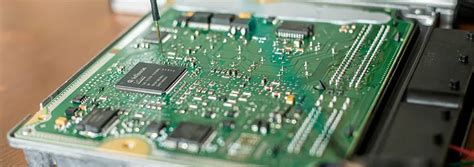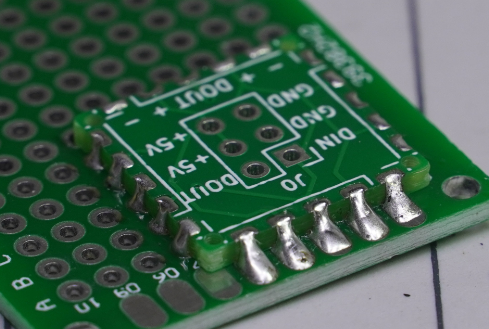Innovative Approaches to Optimize PCBA OEM Production Processes
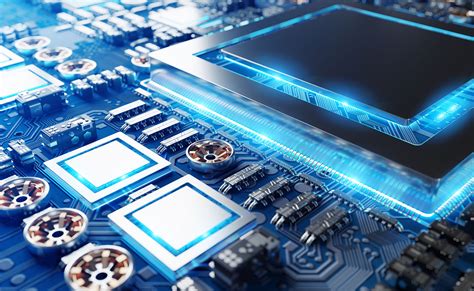
Key Takeaways
The landscape of PCBA (Printed Circuit Board Assembly) OEM (Original Equipment Manufacturer) production is continually evolving, requiring stakeholders to grasp key concepts and terminology to navigate this domain effectively. Understanding the intricacies of pcb assembly can empower manufacturers to implement strategies that optimize their production processes. For instance, enhancing efficiency in PCBA OEM entails assessing workflow management and resource allocation to minimize waste while maximizing output. Additionally, the integration of robust quality control measures ensures that each unit meets the industry’s stringent standards, thereby safeguarding the reputation of manufacturers and reinforcing customer trust.
Furthermore, technology integration plays a pivotal role in modernizing PCBA OEM operations; adopting advanced automation tools can streamline processes and uphold precision in manufacturing. Adapting to market demands requires a focus on flexibility within production processes; it’s crucial for manufacturers to remain agile and responsive to changes in consumer preferences and technological advancements.
"Embracing innovation is not just an option but a necessity for sustaining competitive advantage in the rapidly changing electronics market."
The challenges faced during pcb assembly can be daunting, yet innovative solutions are emerging that address these obstacles head-on. By examining successful case studies, it’s evident that organizations that prioritize adaptability and synergy between technology and workforce tend to outperform their competitors. As we look toward future trends in PCBA OEM, preparing for forthcoming shifts will be essential for sustained success within this dynamic industry.
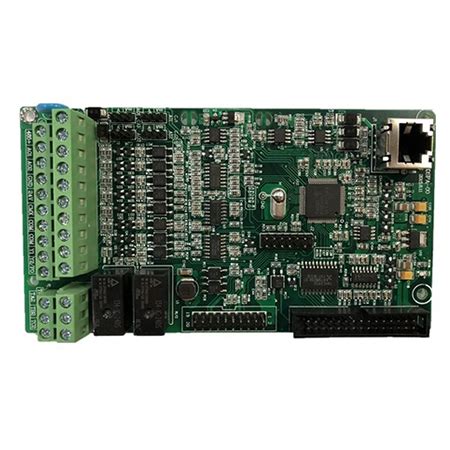
Understanding PCBA OEM Production: Key Concepts and Terminology
In the realm of electronics manufacturing, PCBA (Printed Circuit Board Assembly) is a crucial aspect that combines various components to create functional electronic devices. Understanding the key concepts and terminology associated with PCBA OEM (Original Equipment Manufacturer) production is vital for stakeholders involved in this industry. At its core, PCB assembly encompasses the processes involved in placing electronic components onto a printed circuit board to form a complete assembly. This complex operation requires an intricate understanding of different methodologies, including surface mount technology (SMT) and through-hole technology, which influence both the performance and quality of the final product. Additionally, terms like "bill of materials" (BOM) and "design for manufacturing" (DFM) play significant roles in ensuring that designs are not only viable but also optimized for cost-efficient production. The integration of these concepts is essential for meeting both current and future demands in PCBA production as the industry continues to evolve with technological advancements. Ultimately, a firm grasp of these fundamental terms will aid companies in refining their processes, thereby enhancing overall productivity and ensuring high-quality output in PCB assembly operations.
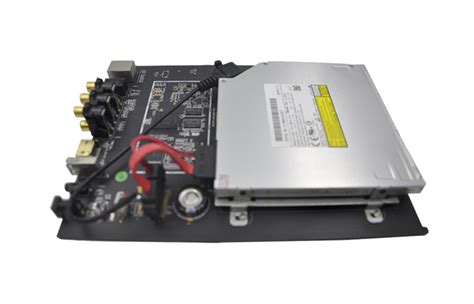
Strategies for Enhancing Efficiency in PCBA OEM Processes
To enhance efficiency in PCB assembly and PCBA OEM processes, manufacturers must adopt a multifaceted approach that integrates best practices across various stages of production. Firstly, streamlining the supply chain can significantly reduce lead times and improve coordination among suppliers, which is essential for maintaining an uninterrupted flow of materials. By fostering close relationships with suppliers and utilizing just-in-time inventory systems, companies can minimize excess inventory and reduce costs associated with storage and waste. Moreover, implementing advanced quality control measures throughout the production cycle is critical to ensure that every component meets strict standards before progressing to the next phase. Techniques such as automated optical inspection (AOI) or X-ray inspection for solder joints can detect defects early, thereby preventing costly rework and ensuring a high level of product quality.
Additionally, incorporating technology integration, such as automation and data analytics within the manufacturing process, enhances not only speed but also accuracy. Automated systems can optimize assembly line operations by performing repetitive tasks with precision while minimizing human errors. Employing data analytics allows manufacturers to gather insights from production metrics, leading to informed decision-making regarding process improvements and waste reduction strategies. Furthermore, training employees on these new technologies fosters a culture of continuous improvement and innovation, empowering them to contribute effectively to the optimization efforts.
As market demands evolve rapidly, enhancing flexibility in production processes is also essential. This could involve adopting modular equipment that allows easier reconfiguration for different product lines or leveraging agile manufacturing principles that enable quick responses to changes in customer requirements. By addressing these various aspects systematically, PCBA OEMs can establish a robust framework that not only enhances efficiency but also positions them well for future challenges within the dynamic landscape of electronic manufacturing.
Implementing Quality Control Measures in PCBA Manufacturing
Effective quality control is pivotal in the realm of PCBA (Printed Circuit Board Assembly) manufacturing, serving as a cornerstone for achieving high standards in pcb assembly processes. To ensure that every unit meets the specified design and functionality requirements, manufacturers often integrate a series of systematic quality control measures throughout production. Firstly, implementing statistical process control (SPC) can help identify variations in the production line that could lead to defects. By continuously monitoring and analyzing data from the manufacturing process, any deviations from expected performance can be quickly addressed.
Another crucial aspect of quality control is conducting thorough in-process inspections. This includes checks at key stages of the PCBA production process, such as component placement, soldering, and final assembly. Adopting automated optical inspection (AOI) systems has become a popular practice here, as they can efficiently detect misalignments or soldering errors that may not be visible to the naked eye.
Moreover, fostering a culture of quality among employees is essential. Training programs focusing on understanding pcb assembly standards and best practices encourage workers to take responsibility for their part in maintaining product quality.
Below is a table summarizing some key measures in ensuring quality control during PCBA manufacturing:
| Quality Control Measure | Description |
|---|---|
| Statistical Process Control | Monitoring production data to identify variations |
| In-Process Inspections | Regular checks at critical stages to catch issues early |
| Automated Optical Inspection | Using machines to detect alignment and solder defects |
| Employee Training Programs | Enhancing awareness and accountability among workers |
By embracing these comprehensive quality control measures, manufacturers can not only eliminate defects but also enhance overall efficiency in their pcba processes. This proactive approach ensures that they remain competitive while meeting the growing demands of the electronic manufacturing industry.
The Role of Technology Integration in Modernizing PCBA OEM
In the dynamic world of pcba (printed circuit board assembly) OEM (original equipment manufacturer) production, technology integration plays a pivotal role in enhancing operational capabilities and meeting market demands. The advent of advanced technologies, such as automation, IoT (Internet of Things), and machine learning, has transformed traditional pcba processes into highly efficient and adaptable systems. By integrating smart factory concepts, manufacturers can streamline their workflows, reduce lead times, and improve overall productivity.
Furthermore, the use of real-time data analytics enables more informed decision-making concerning production scheduling, inventory management, and quality assurance. This shift not only minimizes defects but also ensures that the pcba produced meets stringent industry standards. Implementing these technological advancements fosters a culture of continuous improvement within organizations. As a result, manufacturers are better equipped to respond swiftly to changing customer requirements while maintaining high standards of quality in their products. Thus, the integration of technology is not merely an option but a necessary step toward modernizing pcba OEM operations for sustained competitive advantage in an increasingly complex electronic manufacturing landscape.
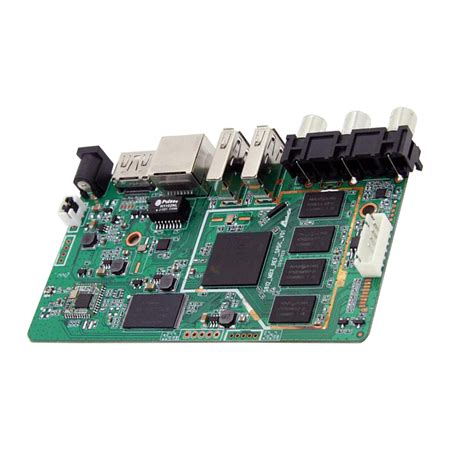
Adapting to Market Demands: Flexibility in Production Processes
In the fast-paced landscape of the electronics manufacturing sector, flexibility in PCB assembly processes has become paramount. As consumer preferences shift and technology continues to evolve, PCBA manufacturers must be agile enough to adapt to these changing demands. This entails not only the ability to quickly modify production lines but also the integration of versatile manufacturing techniques that allow for rapid switching between product types. The use of modular equipment and flexible workforce strategies has shown to enhance efficiency, enabling PCBA facilities to respond immediately to fluctuations in order volume and design specifications. By employing advanced data analytics and real-time monitoring systems, manufacturers can make informed decisions that streamline operations while maintaining high standards of quality control. Ultimately, being responsive to market needs not only improves competitiveness but also fosters stronger relationships with clients who prioritize adaptability and timeliness in delivery schedules. In essence, a commitment to flexibility in production processes is a crucial strategy for any PCBA manufacturer aiming for long-term success in an ever-evolving market landscape.
Challenges in PCBA OEM Production and Innovative Solutions
The landscape of pcba OEM production is marked by a multitude of challenges that manufacturers must navigate to ensure optimal outcomes. One pressing issue is the increasing complexity of pcb assembly designs, which can lead to longer production times and higher chances of defects. To address this, innovative solutions such as modular design strategies have emerged, enabling manufacturers to break down complex assemblies into simpler components. This not only streamlines the manufacturing process but also enhances the ease of troubleshooting and repairs. Additionally, the integration of advanced techniques like automation and robotics in pcba production has shown promise in reducing human error and improving consistency. The implementation of real-time monitoring systems can facilitate better quality control by identifying potential issues early in the production cycle, thus minimizing downtime and waste. As manufacturers strive to meet fluctuating market demands, adopting a flexible production approach that incorporates lean manufacturing principles can further improve adaptability. In summary, tackling the challenges inherent in pcba OEM production requires a multidisciplinary approach that combines technology, innovative thinking, and proactive strategies to sustain quality and efficiency in an ever-evolving industry landscape.

Case Studies: Successful Implementation of Innovative Approaches in PCBA OEM
The implementation of innovative strategies in PCBA OEM production has yielded notable success stories that serve as benchmarks for the industry. One such case involved a leading manufacturer that adopted advanced automation techniques within their pcb assembly lines. By integrating robotics and artificial intelligence, they significantly increased throughput while maintaining precision and consistency, thereby reducing defects during the manufacturing process. This shift not only enhanced the overall efficiency but also elevated their quality control standards, ensuring that each unit produced met rigorous specifications.
Another case study highlights a company that focused on streamlining supply chain management in their pcba production. By leveraging real-time data analytics and improved communication with suppliers, they achieved a more responsive manufacturing process. This allowed for greater flexibility in meeting fluctuating market demands, thus minimizing delays and optimizing inventory levels. Such strategic adaptations not only strengthened their operational capabilities but also led to considerable cost savings, enhancing their competitiveness in the market.
Furthermore, by embracing sustainable practices in the production of pcb assembly, several firms have garnered positive attention from eco-conscious consumers while also improving operational sustainability. The adoption of lead-free solder and energy-efficient machinery has demonstrated a commitment to environmental responsibility without sacrificing performance or profitability.
These case studies underscore the critical role of innovative approaches in transforming PCBA OEM production processes. The integration of new technologies and methodologies has proven to be paramount for companies aiming to stay ahead in an ever-evolving electronic manufacturing landscape, ultimately setting new standards for efficiency and quality in the industry.

Future Trends in PCBA OEM Production: Preparing for Tomorrow’s Market
As the landscape of electronic manufacturing continues to evolve, the future of PCBA (Printed Circuit Board Assembly) OEM (Original Equipment Manufacturer) production is moving toward greater innovation and adaptability. One of the most significant trends is the increased focus on smart manufacturing, where technology integration plays a crucial role in streamlining processes. Advanced analytics, automation, and the Internet of Things are revolutionizing the way that pcb assembly processes are conducted, enhancing not only operational efficiency but also real-time monitoring for quality control. Furthermore, there is a growing emphasis on sustainable practices within PCBA OEM production. Companies are actively seeking ways to minimize waste and energy consumption while maximizing output. This has led to a shift toward using more environmentally friendly materials and methods in manufacturing processes. In addition to sustainability efforts, flexibility in production is becoming paramount as market demands shift more rapidly than ever before. By enabling short-run capabilities and customized solutions, manufacturers can respond effectively to unique customer requirements while maintaining high standards of quality in their pcb assembly operations. Overall, it is evident that embracing these future trends will position companies favorably within the competitive landscape of the electronic manufacturing industry and ensure their readiness for tomorrow’s challenges.
Conclusion
In summary, optimizing PCBA OEM production processes is essential for manufacturers striving to remain competitive in a rapidly evolving industry. By incorporating innovative approaches that focus on enhancing efficiency, implementing robust quality control measures, and embracing the latest advancements in technology integration, manufacturers can significantly improve their pcb assembly workflows. The ability to adapt to changing market demands through flexible production processes is equally critical, as it enables responsiveness to customer needs and shifts in the electronic landscape. Despite facing challenges inherent to pcba manufacturing, such as supply chain disruptions and increased complexity in designs, strategic solutions have emerged that mitigate these issues. Ultimately, as the industry progresses, embracing these innovative strategies will not only enhance current production capabilities but also pave the way for future success in the ever-competitive realm of electronic manufacturing.
FAQs
What is PCBA?
PCBA stands for Printed Circuit Board Assembly, which refers to the process of soldering electronic components onto a circuit board to create a fully functional electronic assembly.
What are the main advantages of using an OEM for PCBA?
Using an OEM for pcb assembly allows companies to benefit from specialized expertise, cost efficiencies, and faster production times while maintaining high standards of quality control.
How can efficiency be improved in PCBA manufacturing processes?
Efficiency can be enhanced by implementing strategies such as lean manufacturing principles, optimizing workflow, investing in automation technologies, and continuously training staff to improve overall production capabilities.
What role does quality control play in PCBA?
Quality control is essential in pcba to ensure that each assembly meets predefined standards and functions reliably. Employing rigorous testing methods and inspection protocols helps identify defects early in the production process.
What technologies are currently being integrated into the PCBA process?
The integration of advanced technologies like AI-driven analytics, IoT devices for real-time monitoring, and automation robotics is modernizing pcb assembly, enhancing both production speed and precision.
How do market demands influence PCBA production processes?
The evolving landscape of consumer electronics drives the need for flexibility in production. Manufacturers must adapt quickly to changes in design specifications and order volumes on a frequent basis.
For further insights or specifics about optimizing your pcb assembly, please visit our page:

